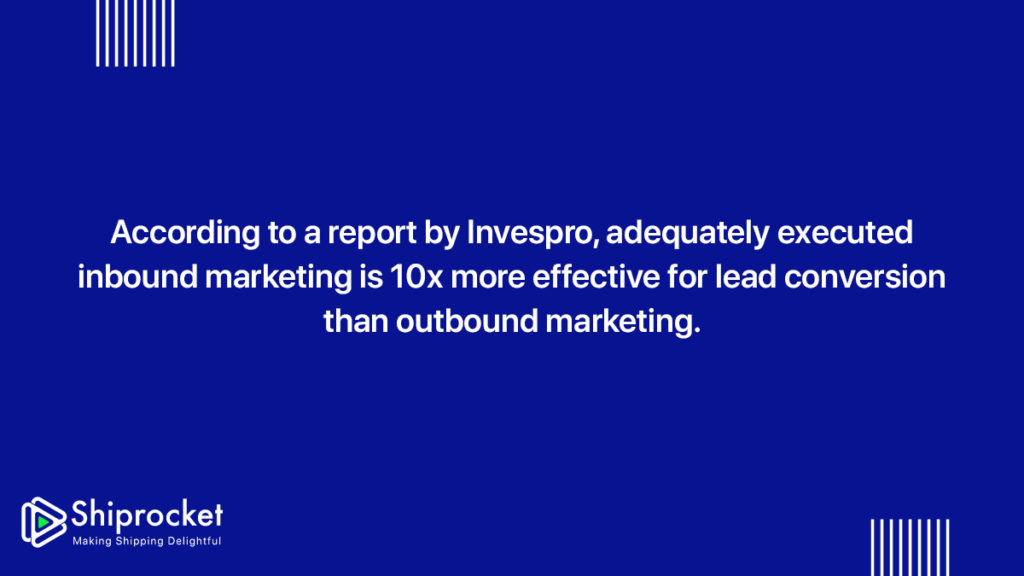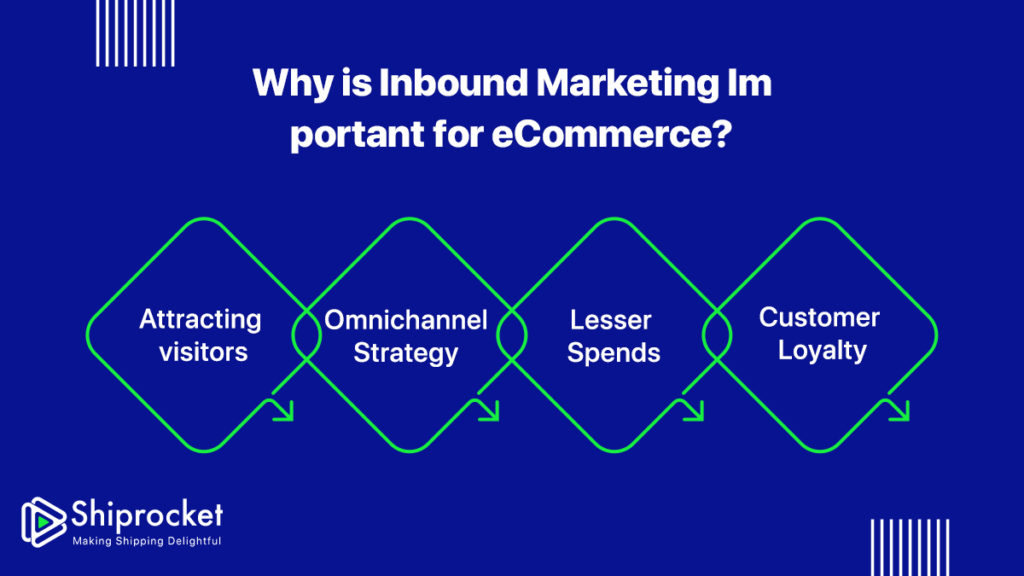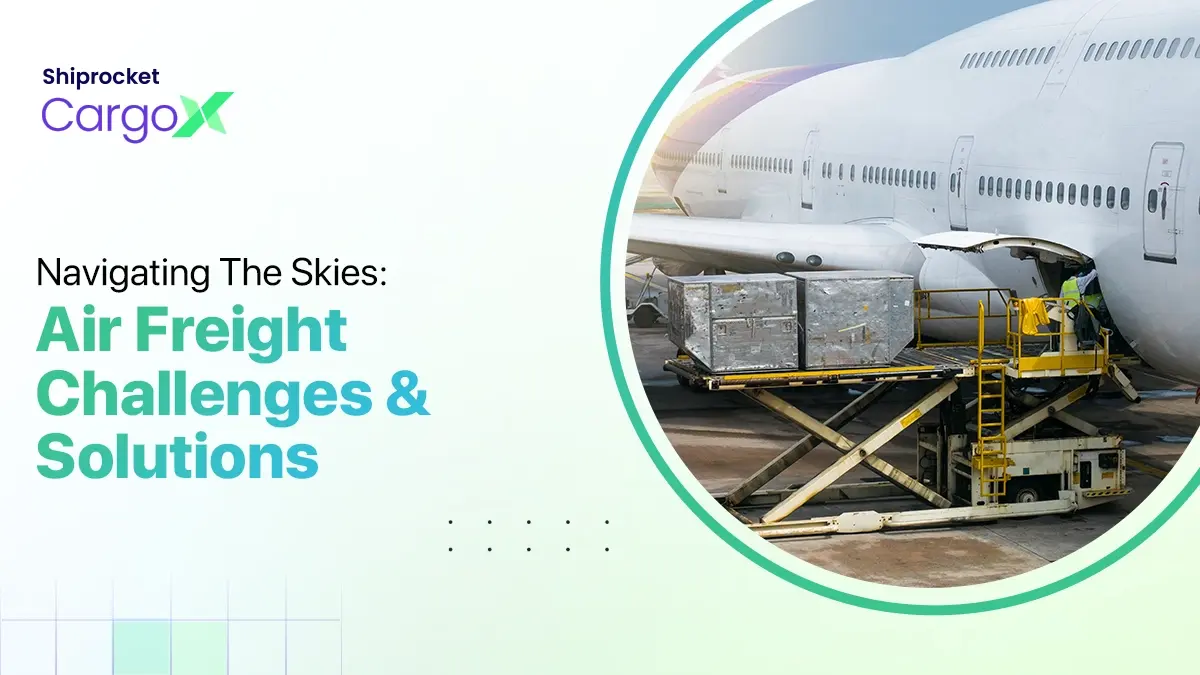9 Inbound Marketing Strategies for eCommerce Success
A report by seoClarity says that ranking first on SERPs is more crucial than ever. On a desktop, rank 1 achieves an average CTR of 19.3% compared to position 10 with 2.2% CTR. Similarly, on mobile, part 1 performs 27.7% CTR and 2.8% for rank 10.
What does this indicate? It tells us that eCommerce businesses are getting too competitive. As the world is becoming more advanced, new companies are emerging online, and you need to adopt new strategies to target customers and market your website.

Inbound marketing is one such strategy that can help you reach out to customers on several platforms with the help of valuable content and customized experiences.
Let’s look at what inbound marketing is and how it is useful for your eCommerce marketing strategy.
What is Inbound Marketing?
Inbound marketing is a strategic approach to solve existing concerns by providing users with relevant content on channels they regularly explore. It does not involve bursting their screen with ads or information when they do not wish to see it.
Hubspot, a famous marketing software company, defines inbound marketing as –
Inbound marketing is a business methodology that attracts customers by creating valuable content and experiences tailored to them. While outbound marketing interrupts your audience with content they don’t want, inbound marketing forms connections they’re looking for and solves problems they already have.
According to a report by Invespro, adequately executed inbound marketing is 10x more effective for lead conversion than outbound marketing.

Therefore, inbound marketing is a vital component of any eCommerce marketing strategy, especially if you want higher returns on lesser spending.
Inbound Marketing Strategies for your eCommerce Business
Search Engine Optimization
Search engine optimization or SEO is a technique to improve your rankings on search engines like Google, Yahoo, Bing, etc. By doing SEO activities, you can enhance your web pages and website’s order to appear first on the search results when your users type a query.
SEO optimization is the best technique to organically appear in user searches and reach out to them in the least invasive manner. For example –
When I search for ‘how to clean glass doors,’ the first result I get is from Cleara Windows. This brand makes custom doors and windows for homes. They strategically used their content so that it ranks first in such a query.

Search engine optimization has several technical and non-technical aspects to it. To conduct SEO activities thoroughly, you will need to hire a specifically dedicated resource.
Every web page of yours must have the relevant keywords that people search or trigger a search query on Google. Google ranks the pages that have the most relevant keywords for the user search. Not only a webpage, but the URL of every web page must also have relevant keywords. The length must be short, up to 125 characters.
Next, every page must have a title tag that is not very long, maybe up to 50-60 characters. When search engines crawl through websites, they look at these elements to decide if they must rank the page.
Along with the title tag, you need to add a meta description. These contain a unique story of the webpage and also include relevant keywords.

SEO is usually of two types, on-page, and off-page. For on-page SEO, make sure your headings are arranged successively with the H1, H2, and subsequent tags.
The H1 must always contain the target keyword to ensure better visibility. Don’t keep text entirely promotional. Make sure to include helper words like benefits, requirements, etc. too.
Add Alt text to images so that the Google image search engine can discover them.
Blogging
Blogging is a great technique to engage with customers who come to your website looking for information. It is a long-term content strategy where you provide your customers with valuable information in articles and supporting images.
When you provide this information, it can help you increase customer loyalty and acquire more customers. This kind of information instills trust in the customer, and they find answers to their queries.
Make sure you conduct thorough keyword research before writing a blog, as this will define your blog’s intent, and Google will be able to discover it faster. Thus, whenever your prospect searches for a query, they will be able to find your blog for answers.
You can also add images at various portions of the blog to make the text more engaging and lively. Elements like GIFs, videos, graphs, and statistical information placed strategically between the blog can also enrich its content.
User-Generated Content
User-generated content is usually the primary driver for converting visitors into prospective buyers. Validation from fellow customers is a significant criterion when shopping online. Since the customers cannot physically feel the product, they rely on other customers’ opinions to validate their purchase. Therefore user-generated content like testimonials, product reviews, product videos cal, etc., are quite useful for converting visitors.
Try to align as many positive reviews as possible. Make sure to include them on every product page so that they can be visible to customers. This inbound marketing strategy can help you acquire new customers and also build bonds with existing customers.
For example, you can find these reviews on Nykaa for all the products they sell.

Social Media Sharing
Social media is a mighty weapon in today’s times. There are over 350 million active users on platforms like Facebook, Instagram, Pinterest, etc. They hardly scroll for content or information and are actively engaging in the buying and selling of goods.
Therefore social media is your hack to discovering new customers and promoting your product actively among them.
Since you do not have only one facet of your business, your website, you can also utilize social media for eCommerce. With features like Facebook shop, Facebook marketplace, Instagram shop the bill tax, you can easily remove the barriers between inbound marketing and eCommerce. We are in the marketing strategy and can easily be used to sell to potential customers directly.
Use social media for marketing any new schemes, products, discounts, etc. You can also collaborate with influencers to promote your products. This helps you establish authenticity among your audience.
Paid Advertising
Paid advertising does not always mean running campaigns in between videos. It also means promoting your social media posts and collaborating with influential personalities to promote your posts. You can use the boost feature on Facebook and Instagram to increase the reach of your images, videos, and other media. This will help you reach out more organically and make sure that more people engage with your content.
Email Marketing
Email marketing is a great tactic to connect with your buyer on a more personal level. You can directly reach their inbox and convert these prospects into customers with specialized recommendations, offers, or even discounts.
According to a Salescycle report, 59% of respondents say marketing emails influence their purchase decisions.
Therefore, sending emails can be extremely beneficial for your business, and you can convert more leads with very little investment.
Emails are said to be one of the most useful techniques for B2C and B2B eCommerce. You must always A/B test your campaigns to see which ones are performing well.
Push Notifications
Push notifications are also targeted directly at customers. On average, adults spend up to 3 hours on their mobiles every day. What better than to target them there. If you have a mobile application for your store, you can send them push notifications about the latest offers, new content, Best deals, seasonal content, etc. The options are endless.
Also, since these notifications can be interactive, you can entice customers much more quickly. Ensure that you do not spam the user with multiple push notifications. Too many notifications by one brand can be bothersome, and you can lose out on existing customers.
Landing Pages
Landing pages are an essential component if you want to collect information or get leads for your business. Landing pages are usually more useful when we talk about B2B companies and can be used as a brilliant inbound marketing strategy. But even for B2C companies, landing pages can show the latest updates, new products, or upcoming updates.
Landing pages with an engaging call to action buttons are usually a game-changer if appropriately implemented.
Forms
On the landing page, you can also include forms that collect information from clients. These can help learn more about the client, understand their needs better, and reach out to them for more details. Forms are the best techniques to convert visitors.
Your forms can contain entries like the name, contact number, email address, etc. You can use this data to send the users email updates, push notifications, etc.
Why is Inbound Marketing Important for eCommerce?

Attracting visitors
Inbound marketing plays a vital role in attracting visitors to your website. With engaging content like videos, images, testimonials, etc., you can attract more people than direct ad campaigns. Provided, these content pieces solve the problems of customers and help them with decision-making.
Omnichannel Strategy
Today the barriers between different buying platforms have dwindled. Customers today are not shopping from only one platform; their approach is omnichannel. Therefore you have to develop relevant content for social media, Amazon, Google, mobile applications, etc. Your channels have uniform information, and each channel leads to a holistic shopping experience for the buyer.
According to a report, 80% of business decision-makers prefer to get company information in a series of articles rather than advertisements.
Lesser Spends
Content marketing costs 62% less than traditional marketing and triples the leads, according to a report. The leads acquired by inbound marketing are much cheaper than regular display, PPC, and outdoor campaigns.
Also, organic leads are usually more qualitative and offer more value to businesses than paid tips.
Customer Loyalty
Inbound marketing helps you build long-term customer relationships. The customers you acquire with inbound marketing do not just stick with you due to your product.
They engage with you for your content and the personalized experience they get on your website. Hence, these customers go on to become brand evangelists and promote your brand among their circles.
Conclusion
Inbound marketing is an excellent strategy to yield maximum results with minimal investment. With the help of the strategies, you can help grow your eCommerce business and gather leads organically. Not just leads, you can establish long-lasting relationships with your customers and help solve the problems. This way, even if your business hits a rough patch, your customers will stand by your products and their claims owing to your transparency and a more customer-first approach.





